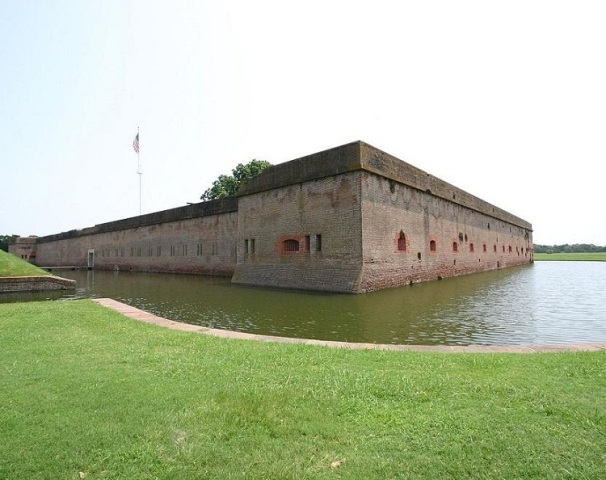Fort Pulaski National Monument of United States bears historical significance. Learn some fun and interesting facts about Fort Pulaski.
Fort Pulaski Facts
Fort Pulaski National Monument is situated between Savannah and Tybee Island, Georgia. Established in 1924, the monument is famous for its significance in the history of United States. It is the place where rifled cannon were successfully tested by the Union Army, at the time of American Civil War, in 1862. Spread over 5.365 acres, Fort Pulaski houses some of the most pristine and picturesque marshland on the Georgia coast. Cockspur Island and the adjoining McQueens Island are included within the premises of this monument. Given below are some fun and interesting facts about Fort Pulaski National Monument.

Image: By Brooke Novak from Atlanta, Georgia (midtown (Flickr) [CC-BY-2.0 (http://creativecommons.org/licenses/by/2.0)], via Wikimedia Commons
Fun & Interesting Facts About Fort Pulaski National Monument
- Fort Pulaski derives its name from Kazimierz Pulaski, a Polish soldier and military commander who fought in the American Revolution, under the command of George Washington. Pulaski was a renowned cavalryman and played a significant role in training Revolutionary troops.
- Construction work on Fort Pulaski National Monument started in 1829 and continued till 1847. The directions to build the fort were given first, by Major General Babcock, and later by Second Lieutenant Robert E. Lee.
- The prime aim behind building the fort was to protect the United States from foreign invasion.
- Around 25,000,000 bricks were used to construct Fort Pulaski.
- Most of the bricks used to construct the monument were made in Savannah. Granite and sandstone blocks were imported from New York and Connecticut.
- Initially, the average thickness of Fort Pulaski National Monument was between five and eleven feet.
- The government of the United States spent about $1,000,000 to build this monument.
- After the outbreak of American civil war, Confederate troops seized Fort Pulaski in January 1861. However, the fort was regained by the Union Army in April 1862, which acquired control over it until the end of the war.
- Fort Pulaski served as the battlefield on 10th & 11th April 1862, when the war between Union forces and Confederate troops was going on. The former positioned them on Tybee Island, while the latter battled from inside the fort.
- Fort Pulaski National Monument also served as a prisoner-of-war camp, in the past.
- The first bombardment of the fort was carried out by Union troops, which used 36 guns, including the new James Rifled Cannon. One of the fort's corner walls was demolished within 30 hours of using the new cannon.
- Fort Pulaski was opened to the public only after the commencement of World War II.
- By the beginning of the 20th century, the fort began to fall into poor condition. The War Department then under took effort to save it.
- Fort Pulaski was declared a National Monument by the War Department on 15th October 1924, in accordance with the proclamation of the then President, Calvin Coolidge.
- Fort Pulaski National Monument was transferred from the War Department to the National Park Service on August 10, 1933.
See also
More from iloveindia.com
- Home Remedies | Ayurveda | Vastu | Yoga | Feng Shui | Tattoos | Fitness | Garden | Nutrition | Parenting | Bikes | Cars | Baby Care | Indian Weddings | Festivals | Party ideas | Horoscope 2015 | Pets | Finance | Figures of Speech | Hotels in India : Delhi | Hyderabad | Chennai | Mumbai | Kolkata | Bangalore | Ahmedabad | Jaipur
- Contact Us Careers Disclaimer Privacy Policy Advertise With Us Lifestyle Sitemap Copyright iloveindia.com. All Rights Reserved.







